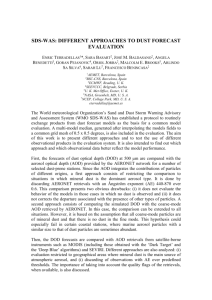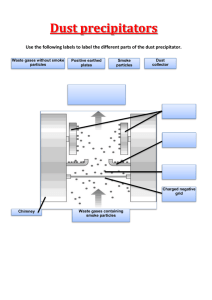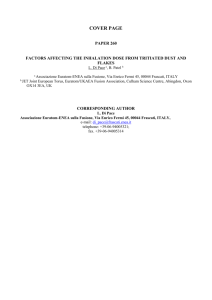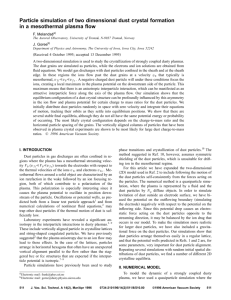determination of maximum amount of confined particles in linear
advertisement
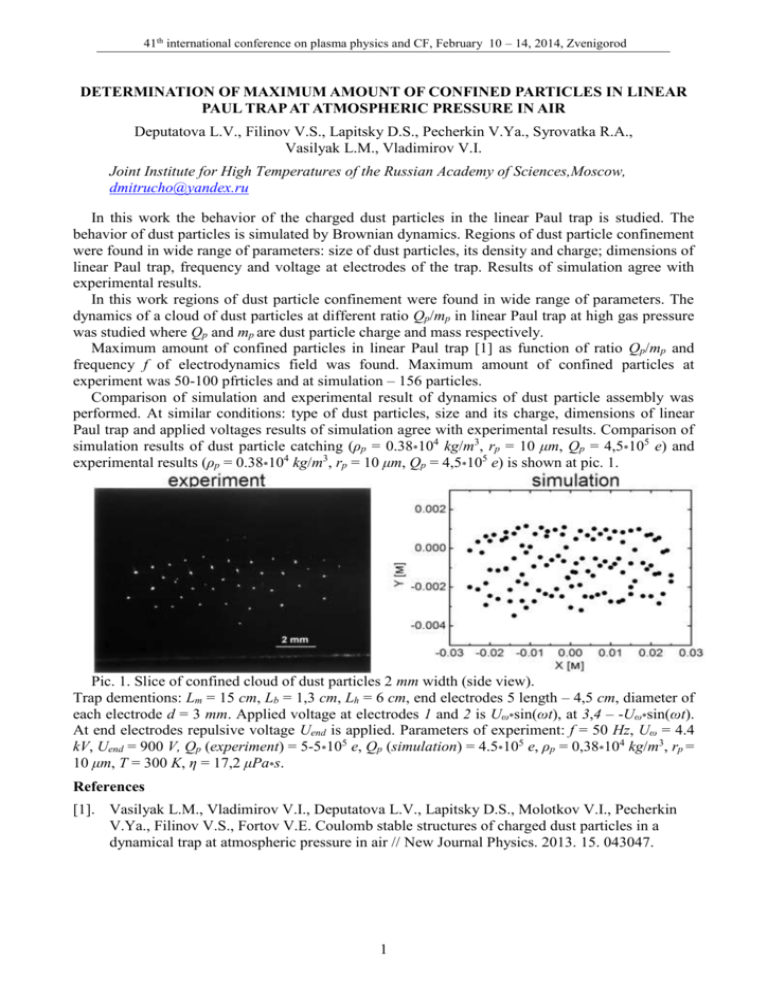
41th international conference on plasma physics and CF, February 10 – 14, 2014, Zvenigorod DETERMINATION OF MAXIMUM AMOUNT OF CONFINED PARTICLES IN LINEAR PAUL TRAP AT ATMOSPHERIC PRESSURE IN AIR Deputatova L.V., Filinov V.S., Lapitsky D.S., Pecherkin V.Ya., Syrovatka R.A., Vasilyak L.M., Vladimirov V.I. Joint Institute for High Temperatures of the Russian Academy of Sciences,Moscow, dmitrucho@yandex.ru In this work the behavior of the charged dust particles in the linear Paul trap is studied. The behavior of dust particles is simulated by Brownian dynamics. Regions of dust particle confinement were found in wide range of parameters: size of dust particles, its density and charge; dimensions of linear Paul trap, frequency and voltage at electrodes of the trap. Results of simulation agree with experimental results. In this work regions of dust particle confinement were found in wide range of parameters. The dynamics of a cloud of dust particles at different ratio Qp/mp in linear Paul trap at high gas pressure was studied where Qp and mp are dust particle charge and mass respectively. Maximum amount of confined particles in linear Paul trap [1] as function of ratio Qp/mp and frequency f of electrodynamics field was found. Maximum amount of confined particles at experiment was 50-100 pfrticles and at simulation – 156 particles. Comparison of simulation and experimental result of dynamics of dust particle assembly was performed. At similar conditions: type of dust particles, size and its charge, dimensions of linear Paul trap and applied voltages results of simulation agree with experimental results. Comparison of simulation results of dust particle catching (ρp = 0.38*104 kg/m3, rp = 10 μm, Qp = 4,5*105 e) and experimental results (ρp = 0.38*104 kg/m3, rp = 10 μm, Qp = 4,5*105 e) is shown at pic. 1. Pic. 1. Slice of confined cloud of dust particles 2 mm width (side view). Trap dementions: Lm = 15 cm, Lb = 1,3 cm, Lh = 6 cm, end electrodes 5 length – 4,5 cm, diameter of each electrode d = 3 mm. Applied voltage at electrodes 1 and 2 is Uω*sin(ωt), at 3,4 – -Uω*sin(ωt). At end electrodes repulsive voltage Uend is applied. Parameters of experiment: f = 50 Hz, Uω = 4.4 kV, Uend = 900 V, Qp (experiment) = 5-5*105 e, Qp (simulation) = 4.5*105 e, ρp = 0,38*104 kg/m3, rp = 10 μm, Т = 300 K, η = 17,2 μPa*s. References [1]. Vasilyak L.M., Vladimirov V.I., Deputatova L.V., Lapitsky D.S., Molotkov V.I., Pecherkin V.Ya., Filinov V.S., Fortov V.E. Coulomb stable structures of charged dust particles in a dynamical trap at atmospheric pressure in air // New Journal Physics. 2013. 15. 043047. 1

